Volume 45
Displaying 1-11 of 11 articles from this issue
- |<
- <
- 1
- >
- >|
-
2012Volume 45 Pages 1-4
Published: 2012
Released on J-STAGE: February 26, 2022
Download PDF (2287K)
-
2012Volume 45 Pages 5-8
Published: 2012
Released on J-STAGE: February 26, 2022
Download PDF (2064K) -
2012Volume 45 Pages 9-15
Published: 2012
Released on J-STAGE: February 26, 2022
Download PDF (4080K) -
2012Volume 45 Pages 16-19
Published: 2012
Released on J-STAGE: February 26, 2022
Download PDF (1812K) -
2012Volume 45 Pages 20-25
Published: 2012
Released on J-STAGE: February 26, 2022
Download PDF (3528K)
-
2012Volume 45 Pages 26-31
Published: 2012
Released on J-STAGE: February 26, 2022
Download PDF (2798K) -
2012Volume 45 Pages 32-36
Published: 2012
Released on J-STAGE: February 26, 2022
Download PDF (2291K) -
2012Volume 45 Pages 37-42
Published: 2012
Released on J-STAGE: February 26, 2022
Download PDF (3135K) -
2012Volume 45 Pages 43-46
Published: 2012
Released on J-STAGE: February 26, 2022
Download PDF (1878K) -
2012Volume 45 Pages 47-50
Published: 2012
Released on J-STAGE: February 26, 2022
Download PDF (1855K)
-
2012Volume 45 Pages 51
Published: 2012
Released on J-STAGE: February 26, 2022
Download PDF (530K)
- |<
- <
- 1
- >
- >|
